I thought this week I would start with a short plug for the Tudors and Stuarts History Weekend on 27th and 28th March this year: https://www.canterbury.ac.uk/tudors-stuarts where you will find all the details and how to book. Moreover, I am very excited because we have now picked our film maker who is Alex Durham, a CCCU alumna in Film Studies, to produce the second film on Paul Bennett exploring ‘Early Tudor Canterbury’. This we hope will give a feel for the Weekend ‘being in Canterbury’.
Now next week’s Lunch Time Lecture will be given by Cassandra Harrington who is studying at the University of Kent for her doctorate. Her talk is entitled ‘Stony-Faced? Faces in the Margins of Europe’s Gothic Buildings’, and she will, I am sure, provide some exciting ideas about these Green Men as they are often called today. Although my favourite remains the Green Pig at Wye parish church.

Please do join us at 1pm on Wednesday 3rd February and as before we will be using Teams Live Events. These lectures are FREE and booking is not required. This is the joining url:
For those who have not been to these lectures before, I hope this will help. Join about 5 to 10 minutes before start time – see joining url above: to join Teams (as you would for Zoom) click on the link or paste in your web browser. Then on the screen click on ‘Open Microsoft Teams’ (centre, top in the little panel, not the buttons in the middle of the screen). Then to get you into the lecture as an attendee ie as part of the audience, click ‘Join now’ (as you would for Zoom). If you have any problems, please contact the CCCU IT helpdesk on 01227 922626 (weekday office hours only).
Just a little about Cassandra, she is an art historian and recipient of a doctoral studentship working on a reappraisal of Gothic foliate head iconography. Her research interests extend to marginal sculpture, manuscripts and illumination, architecture, the transmission and reception of ideas, and the dialogue between visual and textual modes in medieval Europe.
Before I come to the report on Lily’s lecture today, I want to tell you about Jacie Cole’s presentation to the Kent History Postgraduates group meeting in the morning. It was great to see people again and after the usual preliminaries to see how people are doing, the baton was passed to Jacie.
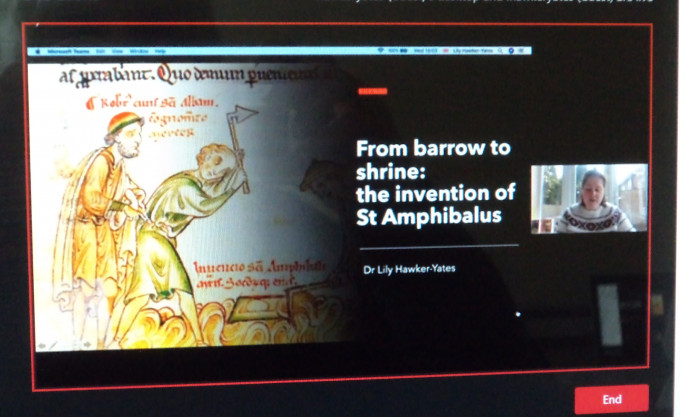
As regular blog readers will know, Jacie is looking at food production and consumption in WWII Kent beyond rationing and for her presentation she took as her lead in a quote from Winston Churchill, ‘War is the normal occupation of man – war and gardening’. Before giving us some preliminary findings and analysis of the answers from her 47 respondents to her questionnaire, she gave us some background about gardens and gardening between the wars. A stark fact is that with a population of 45 million at the start of WWII there were 3,500,000 private gardens and moreover there were considerable differences geographically and between towns and the countryside. Those areas that especially lacked gardens were not surprisingly London and the industrial north. Yet it wasn’t that bright in villages either because 1 in 10 rural residences didn’t have a garden. Additionally, the number of allotments was on the decline, including 50,000 acres of those that had been converted from public parks in wartime being returned to their previous use, in part a response to the fitness campaign which was designed to get people out of their houses, breathing at least fresher air and getting some exercise. What was also eating up land, although primarily farmland, was the inter-war housing boom with its 4 million new houses in what would become suburban sprawls around major cities. Nevertheless, these houses had a dedicated kitchen rather than a scullery, and they had decent-sized gardens! I know, that’s the sort of house I grew up in on the edge of the Green Belt several decades later. So for those in 1930s Britain, there was the idea that gardening was good for mental and physical health. To accompany this, there was a burgeoning of gardening magazines and other periodicals, while radio programmes were similarly introduced to explain how best to grow vegetables and other plants. Nonetheless, as Jacie explained, this was primarily geared to a male audience – women prepared and cooked the produce grown by their menfolk – you get the picture!
The WWII brought the ‘Dig for Victory’ campaign, largely to produce a sizeable part of the nation’s non-cereal foodstuffs, but also because it was seen as a morale-boosting campaign, it would ‘steady the nation’s nerve’ and to help achieve this the radio was again seen as the best tool of communication, alongside sheets of instructions about what and how and when to grow different food crops to provide fresh produce throughout the year. However, what was different was the gender of the gardeners, obviously not completely, but women were there, which may explain the somewhat patronising tone of these male-produced instructions. Yet as the war went on women were expected to work long hours often involving heavy physical labour, in addition to childcare, running the household etc, which meant this affected the time that they could spend on gardening, assuming they had the energy. Thus gardens and allotments were an important part of the war effort at a personal, familial and communal level.
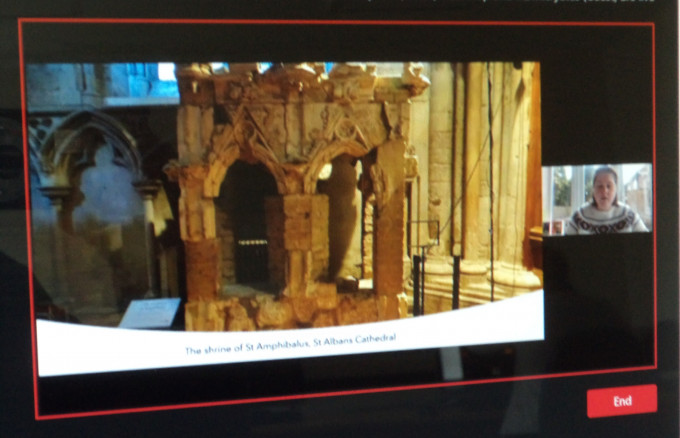
With this in mind, I just going to give you a couple of Jacie’s findings from his study so far, although I will mention that she is delighted to have questionnaire responses from three siblings because they don’t all match up, one being quite a bit different to the other two. This has opened up all sorts of ideas about how and even perhaps why we mis-remember things and what this can tell us about the person/people involved.
Of those who answered her questionnaire, and she is still looking for other people in Kent if you know of someone who grew up during WWII and who would be interested to take part please either email me at sheila.sweetinburgh@canterbury.ac.uk and I’ll pass on your details to Jacie or fill in the form at the end of the blog. Of Jacie’s first group, almost 60% remembered the family having a vegetable garden, but those with allotments was just 6% with 12% having both. Interestingly almost all remembered loving having roast dinners, except those where cooking had been over an open fire because they did not have an oven. While the final matter I’ll mention was the prevalence of hunting to add to the rations. As you probably would expect rabbit was by far the most common animal hunted, followed by pigeon, with pheasants and partridge, one catching a rook and another a swan. Now this may not have been as heinous as it appears because in some parts of Kent swans didn’t all belong to the monarch, and swans occasionally appear in medieval and early modern wills.
As I am sure you can imagine this sparked a considerable number of comments and questions, but I’ll leave you with Pete’s comment in response to ideas about grazing sheep in churchyards and diocesan/parish sources that records this. For as Pete said, there is a list of animals that are allowed and others that aren’t but one animal that is, is the giraffe. If anyone knows of any grazing giraffes in a churchyard, I/the group would love to know more. Consequently, Jacie’s presentation was a major success, and this looks to be a fruitful avenue for her to follow.
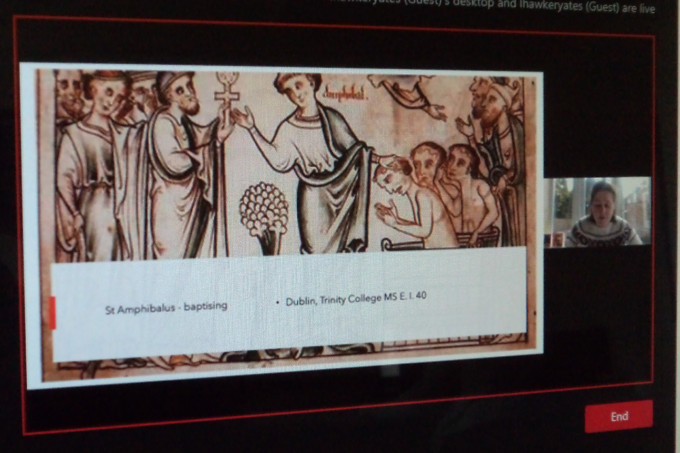
Turning to Lily’s lecture, this primarily concerned one of the case studies in her doctoral thesis, the fantastical finding of the relics of St Amphibalus. Now don’t worry if you have never heard of him because St Alban’s Abbey gave it their best shot, but really they were on to a loser, especially because in the late 12th century St Thomas of Canterbury rather grabbed the headlines. For our saint we need to turn to Geoffrey of Monmouth and his having a poor copy of Gildas where he found the story of St Amphibalus, or so he thought. The saint was a Christian priest who fled from persecution by the Roman Emperor Diocletian in the third century. He was sheltered by St Alban, who he converted to Christianity. When Roman soldiers came to arrest Amphibalus, St Alban put on Amphibalus’ cloak and went to be executed in his stead. Now the problem comes from the Latin which had got turned from hiding ‘under the cloak of the holy abbot’ to ‘under the holy abbot Amphibalus’.
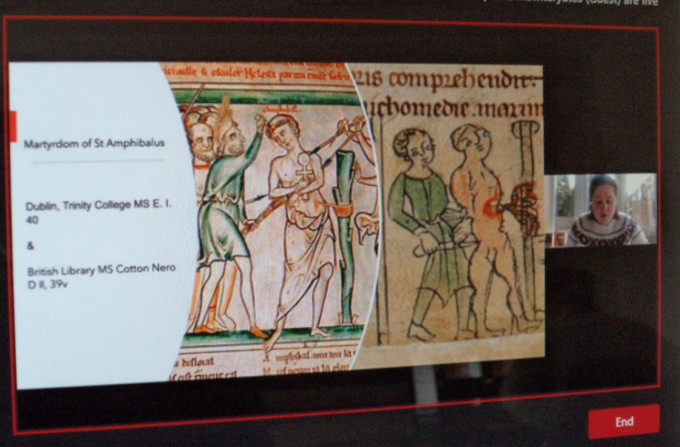
Now you might say, well surely St Alban’s Abbey must have had the relics of St Alban the earliest English martyr so why did they want/need a rather dodgy saint and the answer is that by the 12th century they were not the only place claiming to have the relics of St Alban. Their rivals included the great monastery at Ely and a church in Denmark, following the theft from Ely. Furthermore, St Alban’s Abbey was heavily in debt due to the large-scale building programme of Abbot Robert and certain mismanagement including losing the burial ground of the early abbots, one of which might have been a good candidate for sainthood.
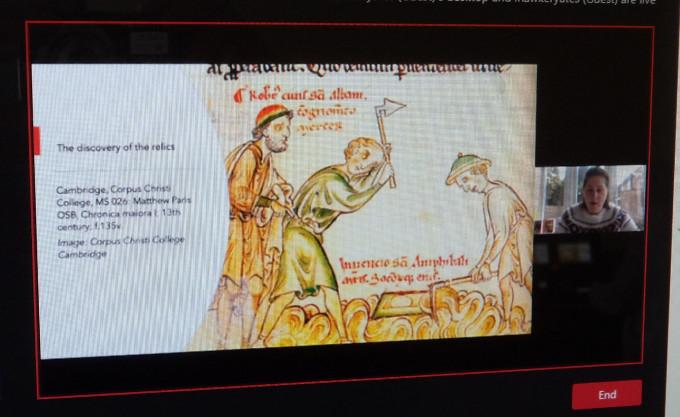
Turning to Roger of Wendover in his Flores Historiarum.we get our first account of the finding of the saint’s relics and their translation to the abbey. The story goes that a man called Robert had a dream regarding St Alban who said that he would reveal the whereabouts of the relics of his friend St Amphibalus. Robert was a good, honest man from St Alban’s without any connections to the abbey. St Alban led Robert north along Watling Street to a neighbouring place called Redbourn Heath where there were 3 barrows and indicated that his friend was buried there, but whatever he did, he must not tell the abbey. Robert was good, he didn’t, but he did tell his friends, who told the abbot. Consequently, the monks wished to rescue the relics of ‘their’ saint’s boon companion but being mindful of dates didn’t go immediately and having waited until after 22 June, they set off on either the 24th or 25th June in 1177 or 1178 to translate the relics to the abbey church. In some ways the dating is very important as it would become the saint’s feast day of the translation and the year would be linked to special anniversaries, but in other ways doesn’t matter. However, 24th seems unlikely because why have the same day as a premier saint like St John the Baptist, why not go for the following day. Either way having travelled to the burial mounds the monks found the relics of our saint and his nine companions, the monks taking their new saint back to the abbey where he would receive a great shrine. Interestingly, the saint’s relics were broken, which is odd for a saint, but as Lily said for contemporary people his stoning might provide an adequate explanation.
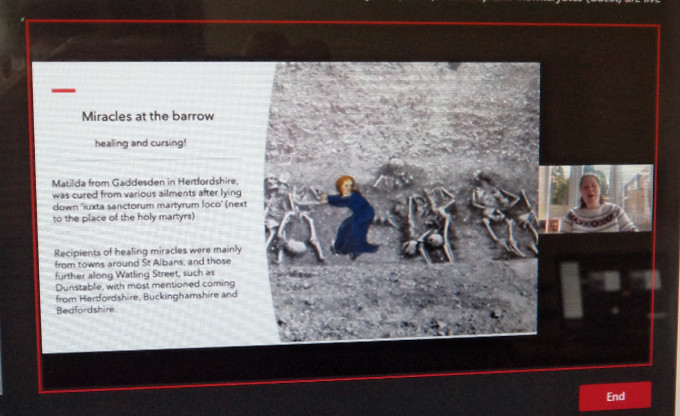
As a saint he was known for a few healing and cursing miracles, and a particularly famous one linked to Becket, the sufferer told by St Thomas to go to St Amphibalus to receive a cure for second leg. Yet even if he was a minor saint, his relics proved valuable because it helped the abbots to enhance their claim to Redbourn manor against perhaps their greatest opponent, the Earl of Warwick. This dispute ran on into the 14th century, but for the abbey their building of a chapel, later a daughter house on the site of the barrow(s) provided a Christianization of the landscape. Moreover, through this linkage of their saint to the barrow they were strengthening their place in the deep past. Theirs was a monastic house with authority, authenticity and longevity that could outstrip all others. And later to strengthen this appropriation of the landscape, the relics were translated again, back to Redbourn to the chapel which had replaced the barrow.
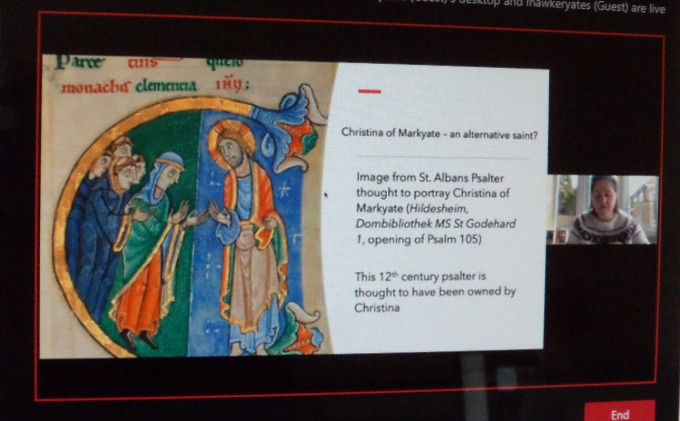
Lily finished by suggesting that an alternative to St Amphibalus could have been Christina of Markyate as a devout woman, but that for the abbey she would not have offered more than their ancient saint, and in some ways far less, albeit she had been a real person.
As you can imagine, this sparked a whole series of questions from the audience of about 70 people concerning whether other ‘saints’ had been ‘found’ in barrows, how else did contemporary society deploy barrows, more about Lily’s chronicle sources and just how St Alban’s had employed their use of translation to provide several feast days for their saint.
Thus this was another very successful lecture and, as one audience member said “Not a question but a vote of thanks – this was excellent. Thank you Lily and good luck with your new job”. And I would heartily agree, but I also want to thank Dr Diane Heath as the excellent producer and Toby Charlton-Taylor for again providing us with IT back-up.
 Centre for Kent History and Heritage
Centre for Kent History and Heritage Sheila Sweetinburgh
Sheila Sweetinburgh 1167
1167

